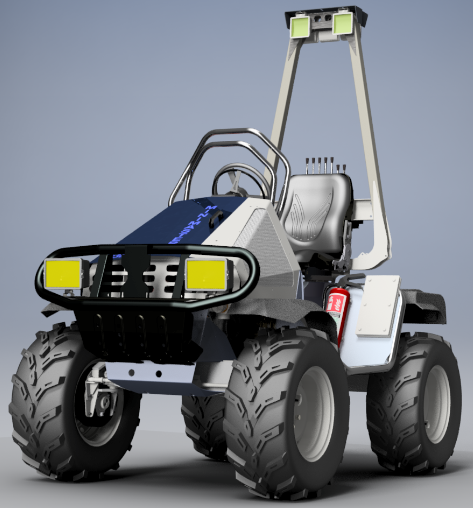Inventor offers three types of model scene lighting: Standard (directional) lighting, Environment (IBL) lighting and a combination of Environment lighting with Standard lights referred to as blended lighting. Use lighting styles to enhance your working environment, visual communications, and design presentations.

Several lighting styles are provided for your use. To create your own style, use an existing styles as the beginning of your new style and make the desired modifications to the style parameters.
Lighting Styles
Styles can be global or local and are differentiated by their icons.
 Standard lighting, global style stored in the library
Standard lighting, global style stored in the library
 Standard lighting, local style stored in the document
Standard lighting, local style stored in the document
 Environment lighting (also called IBL), global style stored in the library
Environment lighting (also called IBL), global style stored in the library
 Environment lighting, local style stored in the document
Environment lighting, local style stored in the document
 Blended lighting, global style stored in the library.
Blended lighting, global style stored in the library.
Inventor includes these blended styles: Dark Sky, Grey Room, Infinity Pool, Stuttgart Courtyard, and Tranquility Blue.
 Blended lighting, local style stored in the document
Blended lighting, local style stored in the document
Environment Lighting
Environment lights derive their lighting parameters from the image used in connection with the style. The image provides a source location and luminance or radiance values that correspond more with real world lighting, providing a more realistic viewing experience. The scene lighting is derived from this 360 degree image providing more realistic results. Style settings control exposure, rotation, and scale.
The environment image source can be used as a 3D background in the scene. The background provides visual continuity with the light source and is seen in materials defined with high reflectance values.
The name change from IBL to Environment lighting aligns with a consistent cross-product naming convention.
Standard Lighting
Standard lighting consists of up to four directional lights which participate in the scene when their box is checked. Each light has settings for color, brightness, relative movement (Camera space or ViewCube space), and position.
Each Standard Lighting Style has settings for brightness, ambience, and shadow direction.
Blended Lighting
Blended lighting consists of environment lighting combined with standard lights to achieve a unique scene lighting scheme. To turn standard lights on/off go to the Lighting tab and click the light icon
 to toggle off or on. Use the typical methods for modifying the settings.
to toggle off or on. Use the typical methods for modifying the settings.
Shadows
The active lighting style sets the direction and appearance of shadows.
To display shadows, select
All Shadows from the Shadows list on the
View tab  Appearance panel.
Appearance panel.